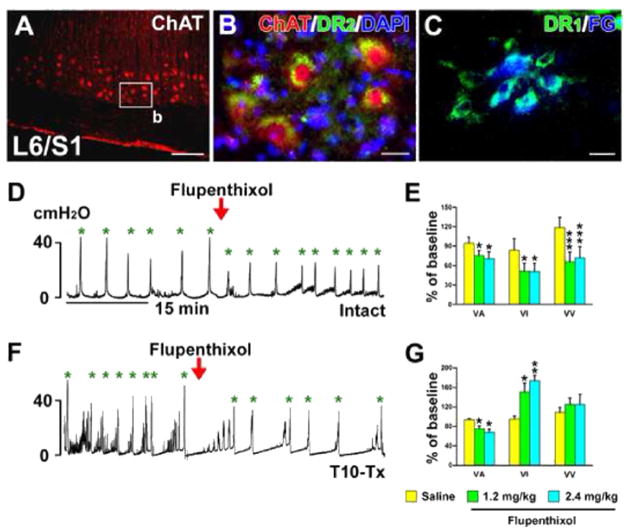Fig. 6.
Non-specific blockade of spinal DA receptors inhibits bladder activity in SCI rats. A–C, Lumbosacral parasympathetic preganglionic neurons (PPNs) express D1-like and D2-like receptors. ChAT+ spinal PPNs (A) express D2-like receptors (B) in a longitudinal section of spinal cord. C, Lumbosacral PPNs retrogradely labeled by i.p. injections of Fluorogold (FG) express D1-like receptors. D–G, Representative traces of bladder cystometry in intact (D) or T10–Tx rats (F) after i.v. administration of the non-selective DA receptor antagonist flupenthixol. Inactivating DA receptors significantly reduces VA, VI, and VV in naïve rats (E), but decreases VA and increases VI in SCI rats 3 weeks post-injury (G; repeated measures of one-way ANOVA followed by paired t-test, *p < 0.05, **p < 0.01, ***p < 0.001). This suggests that DA receptors in the lower spinal cord are active and spinally-derived DA modulates bladder activity following SCI. All parameter values (with saline or drugs) were normalized as a percentage to the baseline (red arrowheads represent drug delivery; green asterisks mean voiding). Scale bars: A, 200 μm; B, C, 20 μm. (For interpretation of the references to color in this figure legend, the reader is referred to the web version of this article.)

